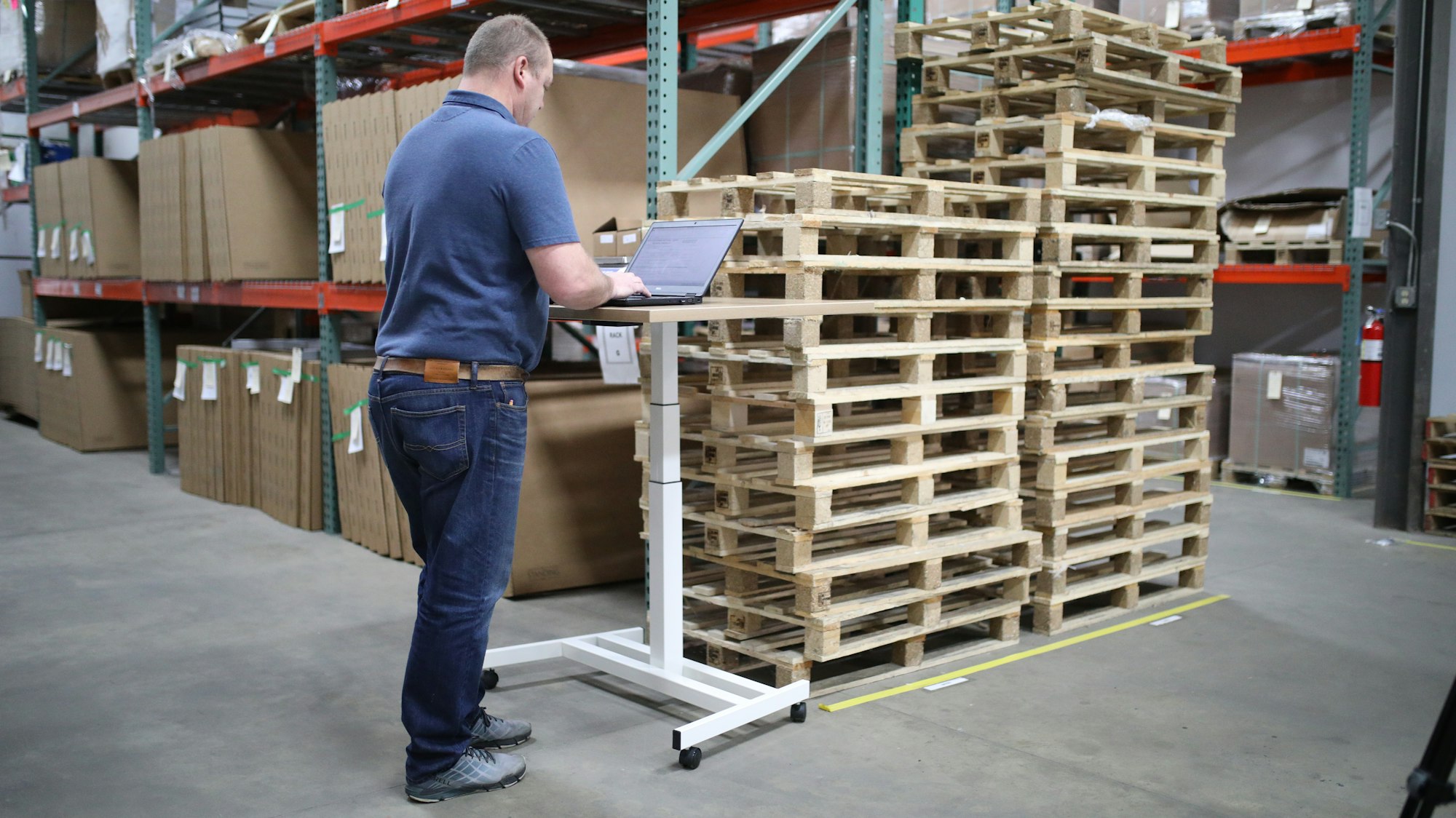The Benefits of OMS in Manufacturing
When we look at how Order Management Systems (OMS) are usually used, we think of big-box retailers or online stores. They are commonly very effective at managing orders and coordinating inventory.
But did you know that OMS can equally effectively be employed in the manufacturing sector? In fact, this technology has made a significant contribution to manufacturing.
There comes a time in any successful manufacturing outfit they become too big to continue to use manual processes to manage their order management and production scheduling.
To run a cost-effective factory, inventory and production has to be aligned closely with the sales and shipping of finished products to customers and clients. There comes a point where this coordination becomes too complex for production managers to manage on their own.
Manufacturers need the right digital solutions to take over this crucial function of their operations. An OMS will be able to manage the manufacturing logistics from start to finish, enabling the factory to fulfil every order in an efficient and timely fashion.
In this article we will discuss how OMS can be used in the manufacturing industry to coordinate production with their order fulfilment processes and thus improve the efficiency and profitability of the entire company.

OMS in manufacturing
Since OMS technology has come onto the scene, it has effectively revolutionised the retail industry. But it has become equally important in the manufacturing field.
OMS can be used to manage all the orders flowing into a factory from several sales channels at once. Which means that orders received through various marketplaces, e-commerce platforms, and brick-and-mortar stores are run and managed through a centralised system. The OMS allows the manufacturer to streamline and optimise the management of orders across business units and channels.
A further benefit of OMS is that it can be integrated with other technology platforms used in the company. This allows sales data to be synced with raw material and finished product inventory data in real time.
The OMS has a direct link to the warehouse management systems and orders are automatically coordinated with all shipping carriers. This allows for a level of coordination and efficiency that would previously have been unimaginable to manufacturers of the past.
The power of an OMS in manufacturing is that it gives companies a hub from which all sales orders can be coordinated with the production output from a centralised location.
This translates into a constant stream of up-to-date information with regards to sales and demand on the one end, and production and inventory levels on the other. The result is that the flow of input materials and finished products through the entire company can be streamlined as a whole.
Data can be leveraged to optimise the factory and create greater efficiency and cost savings while giving a better service to customers and wholesalers who buy its products.

The benefit of OMS to manufacturers
There are several ways that OMS solutions have proven invaluable to manufacturing companies all across the globe:
1. Streamline order processing
A manufacturer isn't only in the business of producing goods, but must also sell those goods to retailers, distributors, or directly to customers.
An OMS can coordinate the orders flowing into the company through all these various channels by consolidating order processing into a centralised platform. In this way, orders from different customers (and different types of customers) are all processed in one place.
When an order comes in, the system will automatically check stock levels at all the warehouses that form part of the company. It will then work out which fulfilment centre is the nearest one to the client that has the requested item in stock.
The system will then send the order details through to that centre. This streamlines the process of picking and packing the product and shipping it off to the customer and ensures that the whole process is completed in the shortest time frame possible.
This streamlines the order processing, reducing errors and eliminating the need for manual intervention.

2. Real-time inventory visibility
Another benefit of OMS to manufacturers is that it provides a bridge between order processing and inventory management. Which means that you will always have access to the latest inventory level numbers that will also be constantly updated as orders are processed and inventory is restocked.
Real-time inventory visibility is an incredibly useful tool for production managers. Proper inventory management is especially crucial to manufacturers.
This is because manufacturers have to manage multiple types of inventory. Not only do they have to keep goods on hand that can be sold to customers, they have to keep track of all the raw materials and parts that go into producing those goods.
In fact, manufacturers have to deal with four distinct types of inventory. Firstly, there are the finished goods. Then there are all the raw materials that go into creating those goods. There is also the intermediate product that is not quite finished, as well as all the materials that have to go into running the factory, which is called maintenance, repair and operating (MRO) goods.
The OMS provides a clear window into what is going on with all these different types of inventory—how much is left, what the quality and status are of the inventory, as well as its physical location.
Manufacturers have to know the status of their inventory at all times. With the right technology tools, they will always have just the right amount of materials on hand to keep up with customer demand. Which means they will avoid understocking on crucial items, or overselling products that aren't ready to be sold.
This also makes it a relatively simple matter to track product demand. If a certain product sells above or below expectation, the production output can be adjusted accordingly.
3. Optimise production scheduling
One of the best tools that ensures that a factory runs smoothly and efficiently is the production schedule. This is a timetable that incorporates all the steps and details involved in production as a way to plan and streamline the manufacturing process.
The production schedule is one of the most important ways for the sales teams and production teams to communicate. Which is why production managers are constantly checking the production schedule, evaluating whether the production is still going to plan, and updating the program when needed.
The goal is to meet sales demands regularly and on time. Which means that the schedule is not only used to plan the production output, but also to accurately forecast and predict customer demand in conjunction with the sales teams.
The schedule is also an important line of communication between managers and workers to ensure that everyone knows exactly what their tasks are for any particular day as well as the output that is expected from their part of the factory.
An OMS is an invaluable tool for production managers to plan and update their production schedules. Firstly, the technology gives you up-to-date data with regards to inventory as well as customer demand. This is essential information for determining which products need to be produced, at what times, and in which numbers.
As the products are produced, the OMS will continually update all inventory levels—both for finished products, and products still in process. Which means it becomes a simple matter to track whether your production schedule is still on track.
The OMS allows you to track production as it happens, make updates to the schedule, and communicate this information to all the members of the production team. It will also be able to assign appropriate tasks to the various teams to keep the schedule running on track.
Which means production processes can be automatically optimised to improve production, lower costs, and boost efficiency of the whole production line.
Through a constant flow of real-time information, managers can quickly identify any inefficiency in the production process and make appropriate adjustments to optimise the process.
The result is the most efficient use of all machinery and personnel possible. The production will run smoothly and inventory levels will be managed effectively.
An added bonus is that it becomes a simple matter to report on the performance from the plant floor. This boost in productivity will ensure that deliveries are always made on time and customers are left satisfied.

4. Improve order accuracy
One of the main benefits of using an OMS, is its ability to streamline and coordinate order fulfilment across different departments in your company. Which means that orders are processed more accurately and speedily.
When order processing is automated, it eliminates the need for constant manual intervention to get the right orders out the door in a reasonable time. A further benefit is that processing errors are drastically reduced.
An OMS is especially useful for companies that sell their wares on multiple channels, have to manage a high volume of orders each month, or have to juggle complex and intertwined supply chains.
The result is that order fulfilment is improved dramatically. This improves your brand’s reputation in the market.
5. Enhance customer experience
When everything runs smoothly in a manufacturing outlet, customers will be happier. An OMS provides a centralised hub where all orders can be processed in a coordinated fashion. Which means you will be able to improve delivery times and ensure that all departments work in sync to process orders accurately.
When customers always receive the correct orders, delivered in short time frames, they will be happy to do business with your company again in future. This builds brand loyalty.
What it does is build trust in your ability as a company to deliver on what you promised. This is especially important in e-commerce, where there are thousands of merchants operating to varying degrees of accuracy and dependability. If you always process orders accurately and quickly, customers will return to your e-store again and again.
But to reach this high benchmark isn't easy. There is a reason that so many e-commerce platforms fail!
Preparing and shipping orders takes a high degree of planning and coordination. Picking and packing errors are all too common, because accurately preparing an order for delivery isn't easy—especially if you have to handle thousands of orders a year.
This is why you have to have the right technology and processes in place to manage order fulfilment. Otherwise you will never be able to meet customers' ever-rising expectations.

6. Cost savings
Most manufacturers operate on razor-fine margins. Even small cost savings can have a marked effect on a factory's profitability.
The way to achieve cost savings is usually to look at your current systems and try to streamline your operations, looking for ways to bring production costs down—and all the way, striving to keep product quality up to par.
Unfortunately, it's easy to fall into the trap of trying to cut costs by sacrificing product quality or firing staff. The result is usually skyrocketing returns and client services flooded with warranty claims. Any sacrifice in product quality will eventually lead to loss of customer loyalty—which will always be detrimental to your bottom line.
So instead, you have to do the hard work of actually analysing your production process and identifying the areas that need to be improved. Cutting costs while maintaining production quality is, of course, no easy feat. You need the right technology tools in place to achieve this lofty goal.
An OMS will allow you to coordinate order processing with your production schedule, which will allow you to optimise your operations and cut unnecessary inventory holding costs, avoid overproduction of goods that don't sell to expectation, and fulfilment errors—which will have real cost benefits to manufacturing companies.
An OMS will help you achieve the goal of trimming production costs while improving product quality, business efficiency, and profits.

Conclusion
These days, manufacturers have to compete on a global stage for business. The globalised economy has created a world-spanning marketplace where even the small outfits have to compete with the giant manufacturers located in China, India, and other manufacturing megacentres of the world.
What is required from any manufacturer is a high degree of order and production management—factories that are run with precision and organisational diligence.
For many years, an Order Management System (OMS) has proven to be an effective tool in the manufacturing environment. The OMS centralises order management, automates order processing, improves inventory management, enables production planning, improves the customer experience, provides valuable data analytics, and reduces costs associated with order fulfilment.
The system allows manufacturers to quickly identify and resolve any issues and manufacturing bottlenecks that may arise during the process.
In short, the OMS becomes an invaluable tool that helps manufacturers streamline their operations, improve efficiency, and increase profitability.